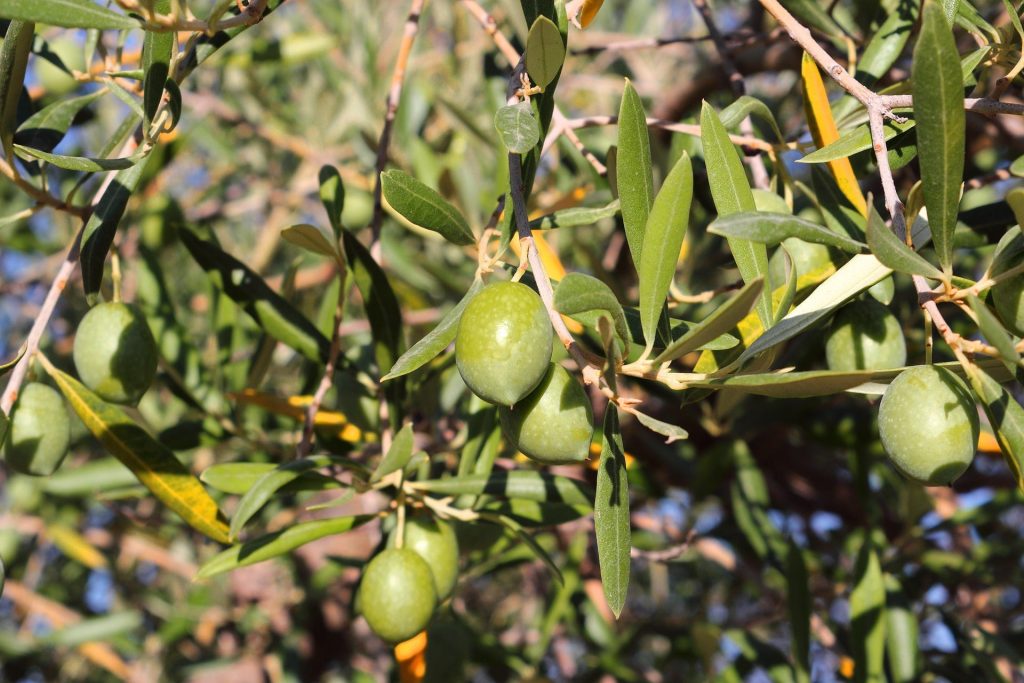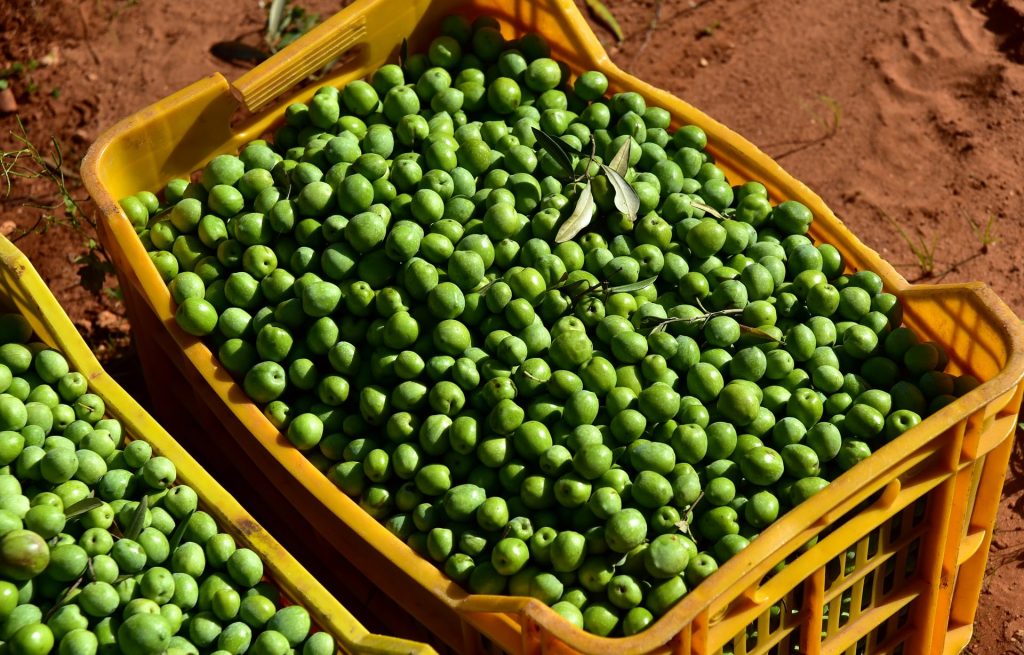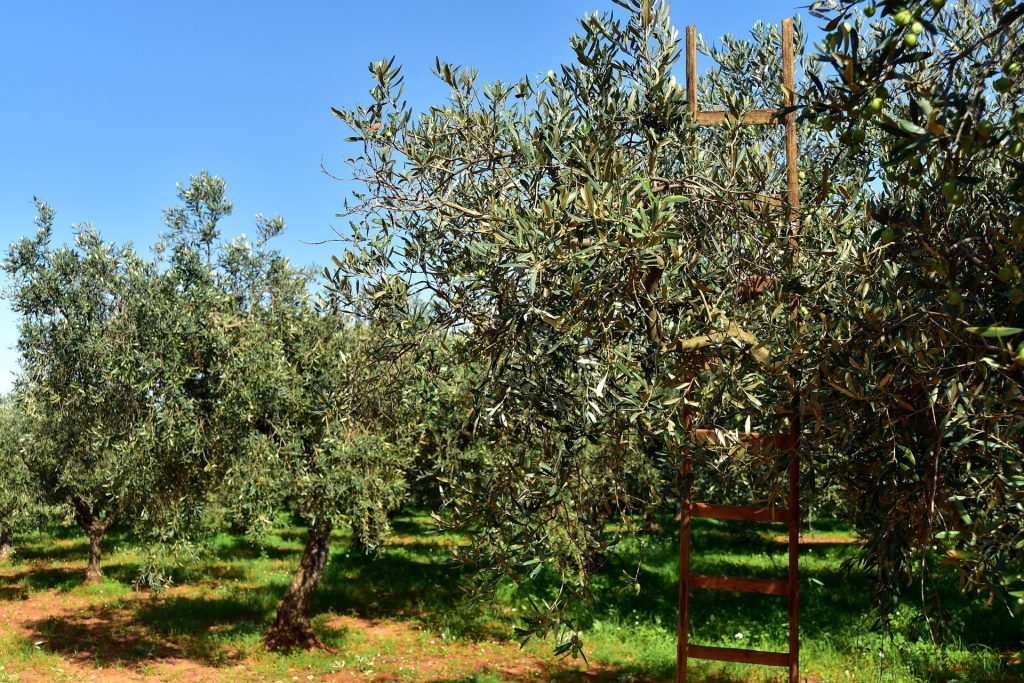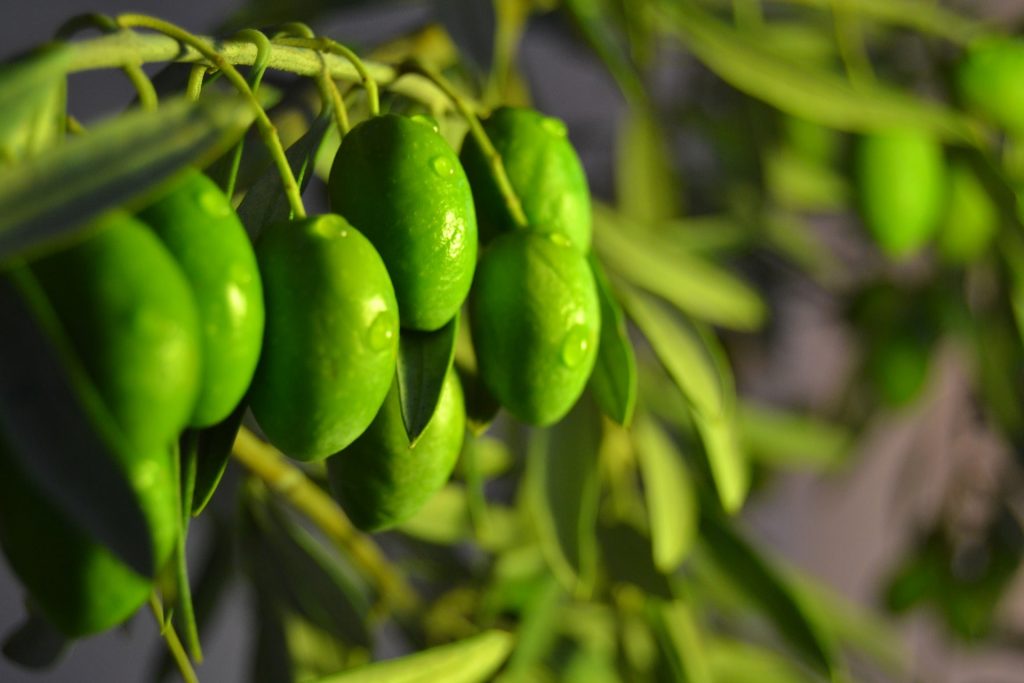The olive is an evergreen tree basically found in Mediterranean regions, Asia and Africa. OliveFarming has been done throughout the world for centuries hence olive is one of the oldest fruits cultivated ever. Olive, the evergreen tree has been cultivated in the Mediterranean regions since about 3000 BC for edible purpose as well as was also a symbol of joy happiness and peace in Europe. Olives are one of the oldest known cultivated trees.
Olive is entirely cultivated for oils. These oils are very beneficial as along with its edible properties, it also has medicinal benefits. Olive oil has many health benefits like control cholesterol levels, regulate blood pressure and also prevent blood clots and cancer. Olive also helps in strengthening immunity.
Olive Trees: Olive (botanical name Olea) is a species of family Oleaceae found naturally in Mediterranean basin.
Basic requirements for olive farming:
Soil Requirement
Olive is cultivated in a wide range of soils although it needs deep, rich as well as well-drained loamy or clay loam soils for best yield. Pit size also depends on the soil type. For example for fertile loamy soil, the pit size should be 60cm×60cm however for poor soil the pit size required is 90cm×90cm.
The depth of oil should be at least 5 feet to assure of aeration of roots. The deeper layer of soil has more importance in comparison with upper layer for good growth. The suitable pH range for good quality and higher yeild of olive is 6-7.5. Other point to be kept in mind is that water stagnation can cause root in a prolonged period of waterlogging.
Climate Requirements:
Cultivation of olives need warm climactic conditions. The factor that has major impact on cultivation is ‘temperature’. So the best temperature range for its cultivation is 15°C -20°C. About 100cm of well distributed rainfall during its growth period is necessary. Frost conditions are not favorable for this crop.
Irrigation of olive farming:
Olive plants should be irrigated in hot and prolonged dry conditions. Irrigation has to be done 1 month before the flowering season. Next, the olive trees should be irrigated after about 2 weeks of blooming period. Irrigation has to be carried out the month after the fruit is set to stimulate the development of fruits.
However without rain irrigation of olive crop becomes a very stressful condition as the crop starts shrinking and dropping fruit’s although the irrigation done by own without rain gives us the power to control stress of water, amount of water.
Olive trees even react in very short span of time if adequate amount of water is supplied. Property waters olive plants have a very good growth and produce large sized fruits. But it is also to be kept in mind that how much water should be supplied.
In the initial years the tree needs water at least once a week but with time the irrigation period becomes once on month
Also Read: How to Grow Lavender with Maximum Productivity?
Intercultural operations in olive farming:
Constant weeding and mulching activates are very important as this operation increase fruit yield and improve quality. Weedicides can also be used to control weeds effectively.
Some examples of the weedicides are glyphosate that should be sprayed at the rate of 0.18-0.36kg per hectare crop. It can be used 2-4 times during entire growth. And for perennial weed gramoxone can be used (2-3 liters per hectare crop ).

Pruning in Olive Farming:
Pruning is necessary to have even and balanced canopy. Because if a olive tree is left unpruned it grows very large which make it very difficult to harvest. Timings also hold importance in this activity. The perfect timing for hard pruning is when the olive tree has finished fruiting, which marks the end of autumn or start of winter season.
However the non-bearing olive tree can be pruned any time throughout the year. To keep a check on canopy it is better to give the tree a light prune each year. It is important to prune off the suckers as they steal the nutrients and water of the canopy.
It also removes dead damages or crossing branches. Olive trees need to be tied to a stake. This had to be done in such a way that it stands tightly. A soft gunny thread can be used to tie up for the first couple of years.
Pests and diseases in olive farming:
There are some diseases found in olive farming which are root rot, leave spot, peacock spot, olive knot , diplodia cancer ,phytophthora crown and more. Some insects and pests like Locusts can cause harm to olive trees. Preventive measures should be taken to avoid these problems.
How long does it take olives to ripen:
The naturally black ripe olives ripen fully on the tree? They reach the dark red to black stage of color in about 3-4 months after the initial or green stage.
Harvesting in olive farming :
Harvesting is a very important phase of olive farming hence it should be done very carefully and at the right time due to the reason that the immature olives can decrease in both quality as well as quantity.

Even if the harvesting is delayed, it will produce the fruits with the oils of higher acidity. So the correct time for harvesting in olive farming begins in mid winters. Olive trees grow throughout the summer and autumn and ripe during mid winters harvesting depends upon desired ripeness, region and variety.
As olives serves couple of purpose like eating and processing the oil out of it so the state if ripeness matters. In the initial state the olives are green and with the time it becomes rosy and at the end finally black. Mostly the olives are ready to harvest at the green ripe, when the juice turns cloudy that is the stage in late September. Then they start ripening into uneven reddish brown olives through mid December, ending up darkening naturally black ripe stage towards end of, winters the stage in which it has high oil contents.
There are different ways to harvest olives. At first one need to place the traps under the trees and then with the help of a rake, gently dislodge the olives and then collect the olives from the trap. And if the olives are to be used for oil purpose, then follow the same steps of harvesting as above, and then gather up any strays on the ground.
Either traditionally or commercially, handpicking is method applicable in both. Though handpicking is the most desirable method, on the other hand, it is also expensive and slow process that definitely affects the quality of olives.
But in today’s modernized world new technologies and machinery are use to harvest olives. In this, a long-handled vibrating tong is used that shake the olives from the branches that shed on the nets laid under the trees. Beside this the other modern method used for harvesting olives is tractor drawing shakers or the grape harvesting machinery used in high density orchards.
Since it’s not possible for everyone to own such machinery, harvesting olives at home still has to be done in old fashioned method. But before harvesting one must now that what flavor they want, like if you harvest it in earlier stages the olives will taste bitter, but as the olives mature , the flavor mellows. After harvesting the olives have to be used within 3 days otherwise the olives will oxidize as taste sour.
There are different maturity stages of olives and it is important to harvest at correct time for better yield and good quality.
- Maturation stages of the fruit depends on different factors like the variety of olive , temperature, irrigation , sunlight etc. High temperature can make the fruit ripen quickly however low temperature can assure the green olive hanging on the tree well into winter. Coming on the other factor variety, some. Variety will ripen faster and other may take long time and these factors make the decision more complicated. One must also keep in mind that these Olives are not as sensitive as grapes hence you need not to get up at mid night and harvest them and put on the ice. All we need to do is proper planning for start to end.
- Advantages of olives and olive oils : Olives and olive oil has very large list of advantages:
This oil is considered very good for skin and hair, it helps to improve the texture of skin , make skin glowing , prevents wrinkles and even helpful in some other skin problems. It is very helpful in increasing or improving the fertility. Olives may prevent cancer too. Beside these olives are great source of anti oxidants, vitamin C as well as a good source of dietry fiber. It helps to control as well as maintain cholesterol levels and blood pressure levels.
- Yield of olives: Yield of olives depends on many different factors
These factors are crop management, method of planting, climatic conditions, cultivar etc.
Crop management further includes many different things like time to Time check on weeds as weeds can suck the nutrients making the quality bad. Irrigation has to be done time to time every factor has to be kept in mind during the whole cultivation period. Method of planting is also very important factor as If the olives Are not planted properly , the whole crop can suffer and we may not get good yield. Choosing the correct soil, staking the crop correctly, good climatic conditions and more and more these factors really affect the growth quality and yield of the crop.

Is olive farming profitable:
So the answer to this is definitely yes. Olive farming is of great profits as olives and olive oils have an excellent demand in international market. If the soil region and climatic conditions are suitable, the profits can be unremarkable.
Olives and olive oils has a number of health benefits Like olives controls and regulates blood pressure, olives Are a very good source of dietary fiber and also of vitamin E . Olive are very good antioxidants. Olives also prevent many diseases like cancer, blood clots and it helps in keeping the immunity strong and in this era health is a priority of almost everyone and hence olives having such great benefits of health is of great demand in the market and hence is very Profitable.
Talking about how much money can one make through this, if a person has 2.2 acres of space that is around 5m×8m one can grow 250 trees on that which would give 10,000 Kg ( ten tones ) of olives a year and at the rate 1$ per kg makes an annual income of 10000$.
But it also depends on the variety of olives that you choose for cultivation and the land that you have for its cultivation as the soil type is one of the major factor that affects the yield of the crop. Next if you take proper care of tour crop and keep each and every small factor in mind the crop quality can be really good and hence the only thing is that one needs to invest time and do a bit hard work for this profit
Conclusion:
Olives along with its other benefits is also one of the favorite thing to eat in one’s own way. One of the most loved ways to eat olives is put the olives into the jar with orange zest, crushed garlic cloves, crushed bay leaves with olive oil. Leave it for few hours after mixing well and its ready to searve. This can also be refrigerated for 2 weeks.
Hence in whatever way one eat olives, it’s one of the most healthy and delicious fruit to eat.

